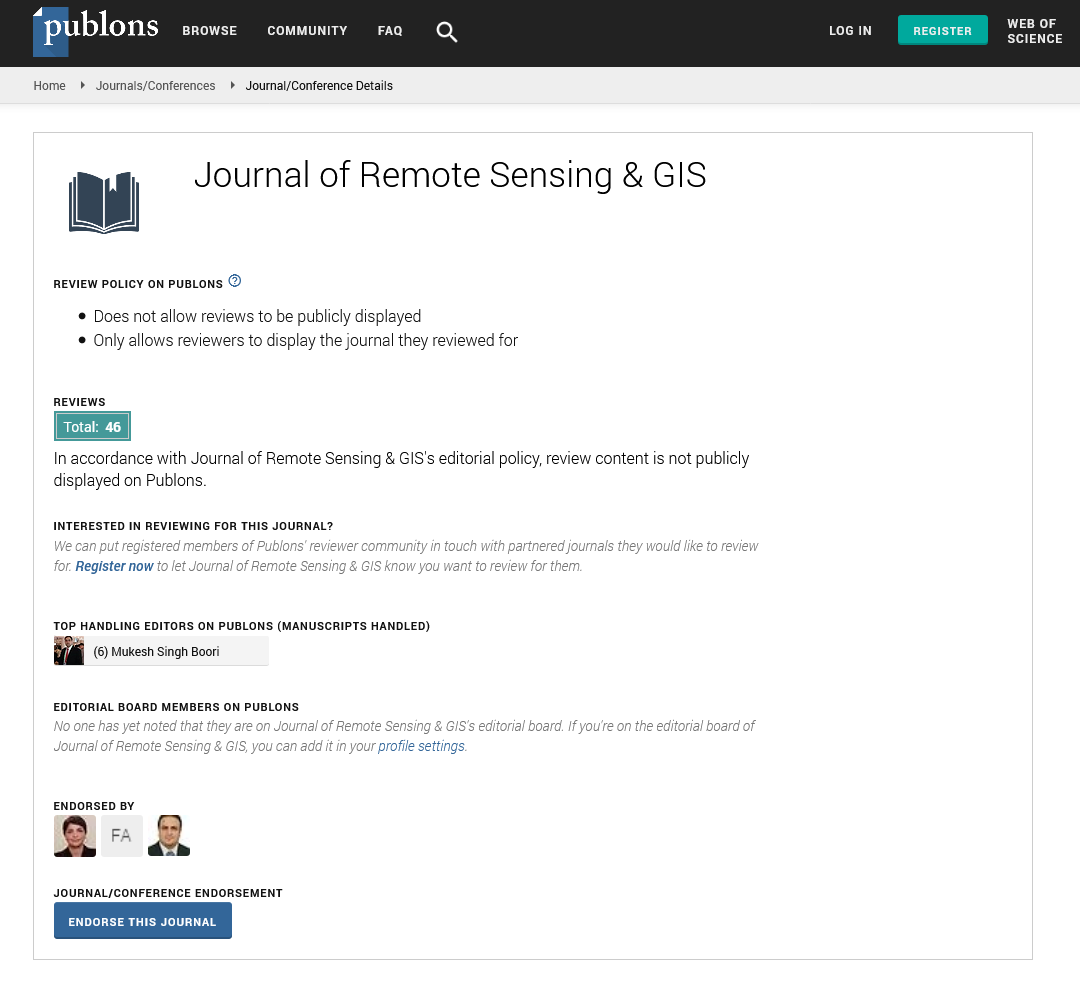Indexed In
- Open J Gate
- RefSeek
- Hamdard University
- EBSCO A-Z
- OCLC- WorldCat
- Publons
- International Scientific Indexing
- Euro Pub
- Google Scholar
Useful Links
Share This Page
Journal Flyer

Open Access Journals
- Agri and Aquaculture
- Biochemistry
- Bioinformatics & Systems Biology
- Business & Management
- Chemistry
- Clinical Sciences
- Engineering
- Food & Nutrition
- General Science
- Genetics & Molecular Biology
- Immunology & Microbiology
- Medical Sciences
- Neuroscience & Psychology
- Nursing & Health Care
- Pharmaceutical Sciences
Abstract
Restoring Environmental Catastrophe in Iran; Lake Urmia
Lake Urmia, the second largest salt lake in the world, is located in the northwest of Iran between two provinces: West Azerbaijan and East Azerbaijan. Within the past 25 years, the lake has lost 95% of its water, causing experts to begin to warn about the serious future environmental, economic, and health consequences. This paper is based on a broad literature review to address the contributing factors and to discuss the impacts of those factors; point out the potential outcomes from environmental, wildlife, economic and health standpoints and offer various strategies to restore the lake. As a major finding, the human-related factor has the highest impact on the existing catastrophic condition of Lake Urmia (i.e., 80%-90%). Previous Iranian governments focused more on fanciful plans (e.g. seeding clouds and transporting water from the Caspian Sea) rather than taking practical measures to restore the lake. The current Iranian government has made a bright horizon for the lake by approving a comprehensive plan for the restoration of the lake and allocating sound financial resources to support the plan (500 million dollars for the first year). It can be inferred that the actions taken to tackle the disaster so far has been able to address the issue to some extent.
Published Date: 2024-08-12; Received Date: 2020-06-01

